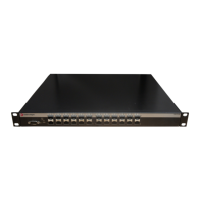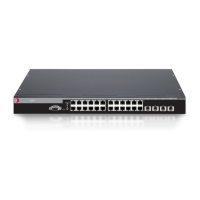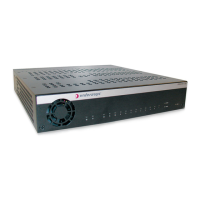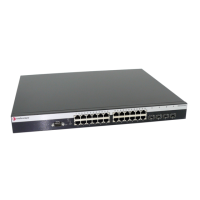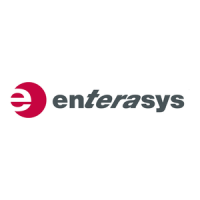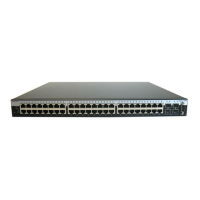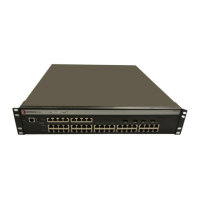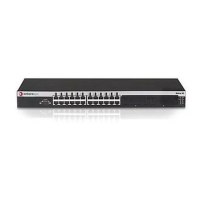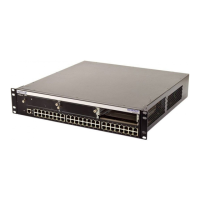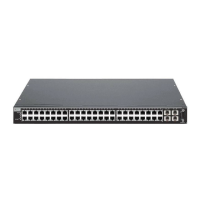Using the Command Line Interface
1-8 Introduction
Navigating the Command Line Interface
Getting Help with CLI Syntax
The Enterasys C3 switch allows you to display usage and syntax information for individual
commands by typing help or ? after the command.
CLI Command Defaults Descriptions
Each command description in this guide includes a section entitled “Defaults” which contains
different information from the factory default settings on the switch described in Table 1-1. The
section defines CLI behavior if the user enters a command without typing optional parameters
(indicated by square brackets [ ]). For commands without optional parameters, the defaults
section lists “None”. For commands with optional parameters, this section describes how the CLI
responds if the user opts to enter only the keywords of the command syntax. Figure 1-2 provides
an example.
Figure 1-2 Sample CLI Defaults Description
CLI Command Modes
Each command description in this guide includes a section entitled “Mode” which states whether
the command is executable in Admin (Super User), Read-Write, or Read-Only mode. Users with
Read-Only access will only be permitted to view Read-Only (show) commands. Users with Read-
Write access will be able to modify all modifiable parameters in set and show commands, as well
as view Read-Only commands. Administrators or Super Users will be allowed all Read-Write and
Read-Only privileges, and will be able to modify local user accounts. The Enterasys C3 switch
indicates which mode a user is logged in as by displaying one of the following prompts:
• Admin: C3(su)->
• Read-Write: C3(rw)->
• Read-Only: C3(ro)->
Performing Keyword Lookups
Entering a space and a question mark (?) after a keyword will display all commands beginning
with the keyword. Figure 1-3 shows how to perform a keyword lookup for the show snmp
command. In this case, four additional keywords are used by the show snmp command. Entering
a space and a question mark (?) after any of these parameters (such as show snmp community)
will display additional parameters nested within the syntax.
Figure 1-3 Performing a Keyword Lookup
Syntax
show port status [port-string]
Defaults
If port-string is not specified, status information for all ports will be displayed.
C3(su)->show snmp ?
community SNMP v1/v2c community name configuration
notify SNMP notify configuration
targetaddr SNMP target address configuration
targetparams SNMP target parameters configuration
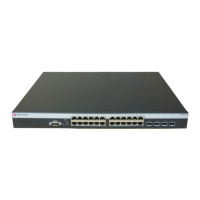
